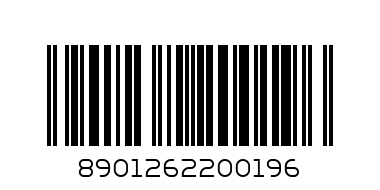
In this interconnected world of commerce, barcode numbers quietly play a crucial role. They’re like silent guides, leading products from busy factories to store shelves. In this article, we’ll explore why barcode numbers are so important and how they help businesses run smoothly. As we dive into this topic, we’ll reveal how barcode numbers make transactions smooth, ensure products are real, and help businesses work better. So, let’s take a journey through the world of commerce, where each barcode number tells a tale of efficiency, trust, and accuracy.
Understanding Barcode Basics
Barcodes serve as visual representations of product data, encoding vital information in a format readable by machines. These graphical representations play an important role in identifying and tracking products throughout their lifecycle. Within the realm of barcoding, a diverse array of symbologies exists, each tailored to specific applications and industries. For instance, Universal Product Codes (UPC) are commonly used in retail settings, while European Article Numbers (EAN) are prevalent across global markets. Understanding the barcode number meaning is crucial, as it helps decipher the encoded information for accurate product identification and tracking. Despite their differences, all barcode types share a common goal: to facilitate efficient inventory management and operational streamlining across various sectors, from retail to manufacturing and beyond.
Structure of Barcode Numbers
Every barcode has different parts that hold important details about a product. The GS1 prefix is like the starting point, showing which company made the product. It’s like a digital ID that tells companies apart in the big world of business. Along with the GS1 prefix, there’s the product code, which is a series of numbers. These numbers unlock details about the item, like when it was made or when it expires. Each digit in the product code tells us more about where the product came from and its journey through the supply chain. Understanding how these parts work together helps businesses use barcode technology better to organize their work, track products, and make sure they know what each item is.
Types of Barcode Numbers
Two predominant formats dominate the barcode landscape: UPC and EAN. While UPC codes are prevalent in the United States, EANs are widely used internationally. Moreover, the transition from traditional 1D barcodes to more versatile 2D codes opens doors to enhanced data storage and expanded applications in various industries.
EAN barcodes are mostly used on products for point-of-sale scanning, where the unique code embedded in barcodes is linked with product information like manufacturing and expiry date, manufacturing locations, product attributes, and ingredients, etc. QR codes are majorly used in applications related to entertainment, retail, advertisement, and transactions.
One-dimensional (1D) barcodes / linear barcodes: One-dimensional barcodes also known as Linear barcodes convert data with varying-width vertical lines and spaces, it reads horizontally, and accommodates up to 85 characters, but requires more characters for additional data.
Two-dimensional (2D) barcodes/matrix codes: A two-dimensional (2D) barcode converts data using dots, squares, and shapes, storing information both vertically and horizontally. It’s ideal for web addresses, text, images, and coupons, and is also very capable of holding up to 7,089 characters.
The Meaning Behind Barcode Numbers
Barcode numbers are not merely strings of numbers; they contain a wealth of information regarding the origins, manufacturers, and specifications of products. These seemingly random digits serve as gateways to understanding the intricate web of the supply chain, providing valuable insights into how products are sourced, produced, and distributed. By unraveling the mysteries hidden within these numbers, businesses can uncover crucial details about product authenticity, traceability, and compliance with industry standards. Real-world case studies offer compelling evidence of how barcode data serves as a cornerstone for informed decision-making, enabling businesses to optimize inventory management, track product movements with precision, and anticipate consumer trends. Furthermore, by leveraging barcode data effectively, companies can instill confidence in their products among consumers, fostering long-term trust and loyalty in their brands.
Importance of Barcode Number Standards
GS1 standards are crucial for barcode numbering systems, ensuring consistency, accuracy, and uniformity across diverse industries and geographical regions. These standards provide a common language for businesses, facilitating seamless communication and interoperability throughout the global supply chain. By adhering to GS1 standards, organizations uphold the integrity of barcode data, mitigating the risk of errors, discrepancies, and data storage. This commitment to standardized practices not only fosters trust and reliability but also enables businesses to streamline their operations, optimize inventory management, and improve overall efficiency. From warehouse management to retail sales and beyond, GS1 standards empower businesses to navigate the complexities of modern commerce with confidence and precision, laying the foundation for sustainable growth and success in an increasingly interconnected world.
Applications and Uses of Barcode Numbers
Barcode numbers are like silent helpers in the world of shopping and logistics. They guide products from where they’re made to where they’re sold, making sure everything runs smoothly along the way. Think of them as digital maps that help products find their way through the maze of warehouses and onto store shelves. But their role goes beyond; barcode numbers also make life easier in places like hospitals and delivery centers. In hospitals, barcode numbers help ensure patients to get the right medication, while in delivery centers, they help track packages to make sure they reach their destination on time. So, whether you’re buying groceries or waiting for a package, barcode numbers are working behind the scenes to make it all happen smoothly.
Future Trends in Barcode Numbering
As technology continues to evolve, so too does the landscape of barcode numbering. Emerging innovations like RFID (Radio-Frequency Identification) and NFC (Near Field Communication) promise to revolutionize how we track and manage inventory. Moreover, ongoing efforts in standardization and regulation aim to enhance barcode interoperability and data security, paving the way for a more connected and efficient future.
Conclusion
In the complex world of global business, barcode numbers act like the strings weaving together different parts into one big picture. When businesses grasp their importance and follow set rules, it opens doors to more efficient and successful operations in today’s digital age. Use this understanding to guide your journey through the twists and turns of modern business, knowing you’re equipped with the tools for success.



